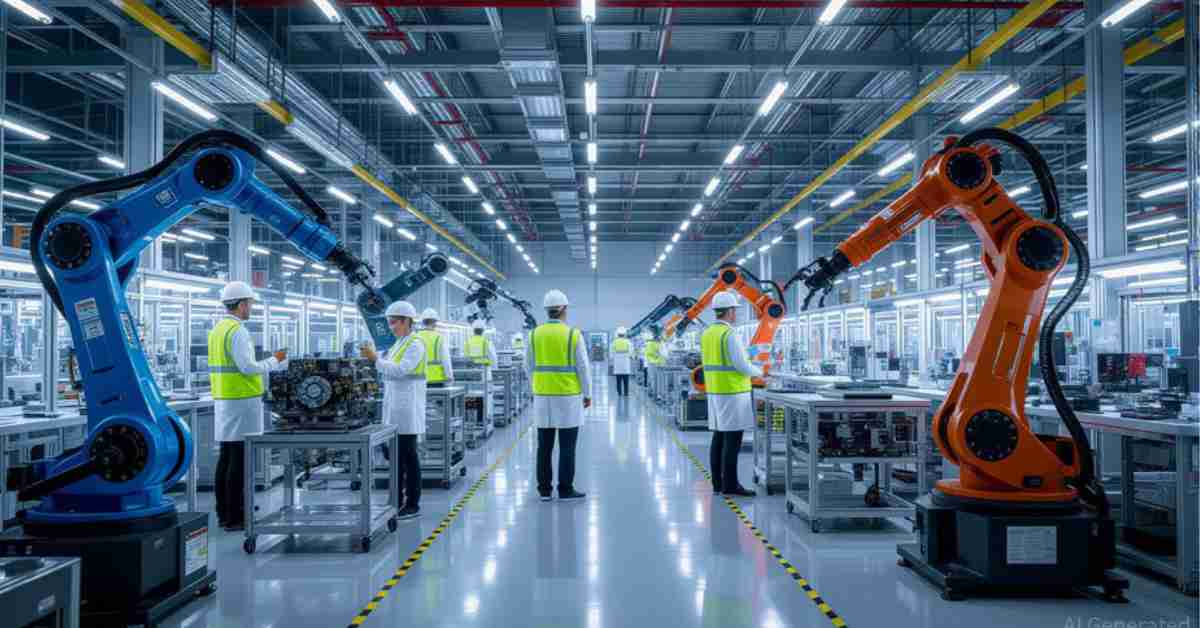IoT in Manufacturing: Driving Efficiency, Quality, and Smart Factory Innovation

An epic metamorphosis is underway, led by technologies that promise to make manufacturing more efficient, productive, and innovative. The IoT is revolutionizing the manufacturing industry, which comprises interrelated devices, sensors, and software linking physical and digital worlds in one seamless interface. With real-time insights, predictive maintenance, and automated intelligence at their disposal, manufacturers can envision, build, and deliver products in ways never before conceivable. The adoption of IoT by any manufacturer hoping to retain its competitive edge has become a foregone conclusion and an absolute must for its survival in the future.
1. Understanding IoT in Manufacturing
1.1 What is Industrial IoT (IIoT)?
Industrial IoT (IIoT) applies the concept of IoT specifically to manufacturing plants and major industrial operations. Unlike consumer devices, IIoT hardware is made to tolerate harsh environments like heat, dust, and heavy use. It includes sensors for pressure, temperature, and vibration, actuators that can control a robotic system, and RFID tags for product tracking. Together, these devices generate massive streams of data with which to monitor factory operations in real time and with great detail.
1.2 Key Components of an IIoT System
An IIoT ecosystem typically consists of:
● Hardware: This includes sensors and devices that continuously collect data from the machines, production line, or environment. These devices are the core of the IIoT system in that they collect critical operational information.
● Gateways: Gateways gather data from multiple disparate devices securely, then transport it to central processing systems. Deskside, they allow raw factory-floor data to flow downstream to analysis platforms with efficiency.
● Connectivity: Means of communication, wired or wireless (Wi-Fi, 5G, or any standalone industrial protocol), each of which assures uninterrupted data transfer between devices, gateways, and platforms.
● Platforms: Cloud or even edge computing platforms store, process, and analyze the data gathered, which would otherwise be unreachable. These would offer intelligent insight, real-time monitoring, and decision-making to enhance manufacturing operations.
The architecture helps manufacturers to convert raw data into accepted insights upon which decisions can be based at every level of the production.
1.3 Data as the Driving Force
Data is essentially at the core of any industrial internet system. Continuous monitoring fosters early anomaly detection, workflow optimization, and decision-making. With data, manufacturers can further improve operational efficiency, cut waste, and maintain quality standards.
2. Enhancing Operational Efficiency with IoT
2.1 Predictive Maintenance
In modern smart manufacturing solutions, preventive maintenance is one of those critical elements that need to be carefully considered. Subtle changes in vibrations, temperature, or noise levels can all indicate that something is amiss in equipment monitored by sensors. The early detection of potential problems enables interventions before they become major issues. Such proactive monitoring is favored so as to avoid unexpected downtime, minimize compensation granted for repairs, and ensure uninterrupted production-even studies mention a 50% reduction in downtime.
2.2 Real-time Monitoring and Optimization
The IoT enables constant tracking of the production line, material levels, and machine working performance. Real-time visibility assists managers in allocating resources at the right moment, avoiding bottlenecks, and ensuring consistent output.
2.3 Energy Efficiency and Sustainability
IoT monitors energy consumption between facilities, considering inefficiencies and scheduling equipment more intelligently. This lowers operational costs while also reducing environmental impact: mutually profitable in view of sustainability objectives. C3 AI: The New Industrial AI You Should Know About
3. Driving Quality Control and Innovation
3.1 Automated Quality Inspection
IoT-powered cameras and sensors with AI have the ability to inspect the products with high speed and accuracy. Such systems detect defects that some human inspectors could have missed, ensuring consistent quality and minimizing wastage.
3.2 Supply Chain Visibility
The Internet of Things allows total tracking of materials and products to ensure better traceability and quality control. In instances where a product shows defects, the manufacturer would be able to locate all affected batches faster, thereby making the recall more efficient and keeping customers happy.
3.3 Smart Products and Customization
The IoT is transforming the products themselves. Smart connected devices are provided to the customer with personalized features and mass customization. Thus, a factory may very quickly respond to customer demands for slight alterations, producing such products in a cheap manner.
4. Workforce and Safety Benefits
4.1 Augmented Reality (AR) for Training
As IoT-integrated AR devices leads one to provide operators with immersive, real-time directives. Remote experts can now help and annotate with live views directly, thus cutting errors and enhancing training experiences.
4.2 Enhanced Safety
Environmental hazards and workers’ vitals are monitored through different IoT sensors, which would trigger alerts or shutdowns when risks are detected. The proactive approach toward reducing workplace accidents is thus very strong.
4.3 Human-Machine Collaboration
Cobots use IoT data to work side by side with human beings. Cobots take on all sorts of mundane or heavy tasks, thereby freeing workers to do higher-order thinking and creative work while being productive and happy in their work environment.
5. Challenges and Considerations
5.1 Cybersecurity and Data Privacy
“Increased connectivity breeds security vulnerabilities. Strong cybersecurity must be employed in manufacturing to protect vital data and to avert interruptions into operations.”
5.2 Integration with Legacy Systems
Industrial IoT may sometimes be faced with machinery that may simply not be compatible for IoT integration. The successful installation of newer devices into the solution of Machina Antiqua relies critically on proper planning, adaptor interface, and compatible software.
5.3 Workforce Training
IoT means new workers will have to be trained to interpret data, control intelligent devices, and perform simple programming. Hence making investments into training must occur if IoT capabilities are to be achieved.
6. The Future of Manufacturing
6.1 AI and Machine Learning
AI and ML hold a complementary role to IoT by analyzing large datasets for patterns and predicting those issues before they happen, thereby enabling smarter and autonomous operations.
6.2 Digital Twins
Digital twins are ultimate replicas of a factory or equipment powered by real-time IoT data. They allow engineers to simulate and observe process improvements, test change scenarios, and plan maintenance without impacting the physical operations.
6.3 The Smart Factory Vision
The smart factory fully integrated ensures that IoT becomes its nervous system. Machines communicate autonomously, supply chains self-adjust, and production is dynamically aligned with demand for enhanced efficiency, flexibility, and quality.
Conclusion: Embracing IoT in Manufacturing
IoT is transforming manufacturing to become more efficient, cost-effective, safe, and innovative. Success for businesses seeking to implement this technology comes with clear-cut planning, investment in infrastructure and training, and making cybersecurity a priority. The smart factory era is well underway, and embracing IoT is the only sure way to having a connected, resilient, and competitive manufacturing future.






